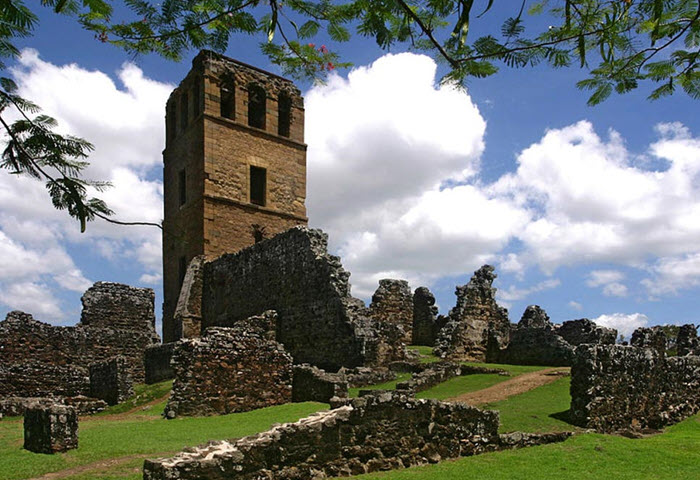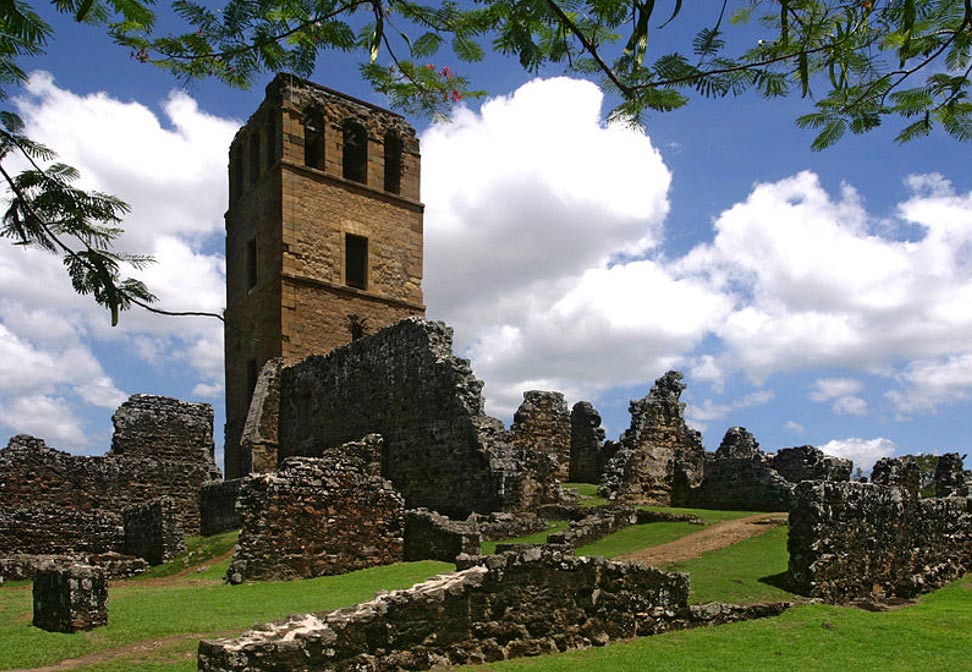Panama City in Central America is a bustling city of 1.5 million people. It is a major financial hub as well as a popular tourist destination and fortunately the remains of the old Panama City , an area known as the Panamá Viejo, can still be seen and visited. Today it is a World Heritage Site.
The Rise and Fall of Panamá Viejo
The original settlement of Panama City, now known as Panamá Viejo, replaced two earlier settlements located inland. Established in 1519 by the Spanish conquistadors , it was the Spanish Empire’s first outpost on the Pacific coast and in 1521, was elevated to the status of a city by royal decree.
Strategically situated, Panamá Viejo was used as a base by the Spanish conquistadors when they launched their invasion against the Inca Empire . And because it was the starting point for the Camino Real (Royal Road), it later played an essential role in the gold and silver trade. Precious metal from Spanish colonies was transported to the city and then transported over land to Portobello, from where it was sent to Seville.
Much of the trade of the city was in the hands of the Genoese, just as it was elsewhere in the Spanish Empire. Later, Panamá Viejo also became a key point in the trade between the colonies in Latin America and the Philippines.
How An Infamous Welsh Pirate Destroyed the Conquistadors’ City of Panama Viejo
Panama City in Central America is a bustling city of 1.5 million people. It is a major financial hub as well as a popular tourist destination and fortunately the remains of the old Panama City , an area known as the Panamá Viejo, can still be seen and visited. Today it is a World Heritage Site.
The Rise and Fall of Panamá Viejo
The original settlement of Panama City, now known as Panamá Viejo, replaced two earlier settlements located inland. Established in 1519 by the Spanish conquistadors , it was the Spanish Empire’s first outpost on the Pacific coast and in 1521, was elevated to the status of a city by royal decree.
Strategically situated, Panamá Viejo was used as a base by the Spanish conquistadors when they launched their invasion against the Inca Empire . And because it was the starting point for the Camino Real (Royal Road), it later played an essential role in the gold and silver trade. Precious metal from Spanish colonies was transported to the city and then transported over land to Portobello, from where it was sent to Seville.
Much of the trade of the city was in the hands of the Genoese, just as it was elsewhere in the Spanish Empire. Later, Panamá Viejo also became a key point in the trade between the colonies in Latin America and the Philippines.
By the 1580s the city only had some 600 people, many of whom were of Genoese descent. From here on, the city began to expand rapidly, despite several fires and hostile local tribes. The growing wealth of the city made it a target and it was attacked several times by French and English pirates . Despite this and an earthquake in 1620, the city continued to flourish and had 10,000 residents by 1670.

Ruins of the church at Panamá Viejo (Mayer, K / CC BY 2.0 )
The Welsh pirate Henry Morgan launched a surprise attack on Panamá Viejo in 1671 and his 1500 seasoned buccaneers easily defeated the city’s militia. Morgan and his men sacked the city, committing many atrocities. During this attack a fire was started, and the city’s magazine exploded. There are questions as to whether the pirates or the retreating Spaniards were to blame, but a devastating inferno engulfed much of Panamá Viejo and vast swathes of the city were gutted. Thousands lost their lives. Such was the extent of the devastation that the Spanish governor ordered Panama City be moved inland to a safer location.
The Remains To Be Seen At Panamá Viejo
There are extensive remains to be seen at the site which was once the regional capital of the area. The original settlement had a busy port and at its heart was the royal district ( Casas Reales ). The treasury, custom house, and other buildings were located there. It was once separated from the rest of the city by a moat and wooden ramparts. Little of these now remain and the district is thought to have been destroyed by the fire of 1671. What survived was further damaged when the area was used as a landfill site.
Catedral de Nuestra Señora de la Asunción is a well-preserved church in the district and attracts many tourists. The walls and bell tower of the cathedral can still be seen, but the main façade collapsed long ago. There are many ruins of some of the stately homes that were once a feature of Panamá Viejo. These include the ‘ Casa de los Genoveses’ (Genoans’ House) and Cabildo de la Ciudad which was built by a wealthy merchant in the 1610s. The old town’s best-preserved private residence is the Casa Alarcón .
The remains of many religious buildings can to be visited, although the most well-known are the church and convent, Iglesia y Convento de la Concepción , which were erected by an order of nuns and cover almost two-blocks.

Casa Alarcón, Panamá Viejo, Panama (Mora, M / CC BY 2.0
The restored bridge which was the starting point of the Camino Real is well worth seeing as it was from here that bullion was carried to the Atlantic coast for transportation to Spain.
Visiting Panamá Viejo and Walking the Magnificent Ruins
Panama City is easily accessible and there is plenty of accommodation near Panamá Viejo. Their old town is to the southwest of the modern city’s center and is situated in a humble neighborhood. The admission fee to visit the Panamá Viejo is 15 dollars but well worth the price as the area is extensive. Be prepared to do some walking, although golf-carts are sometimes available for hire.

